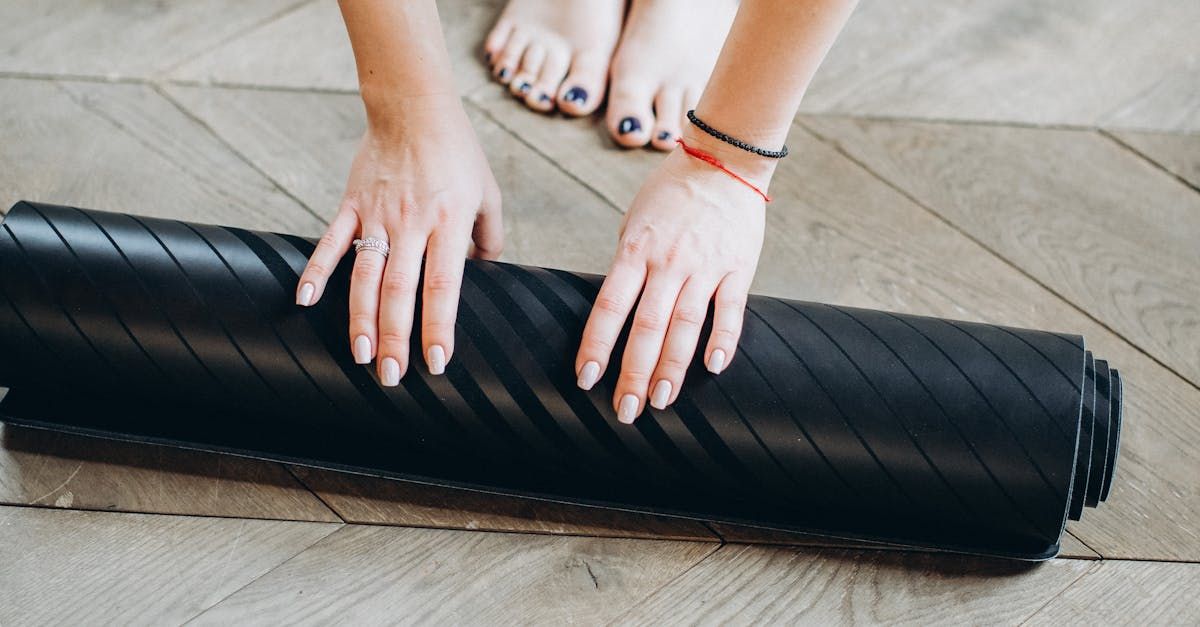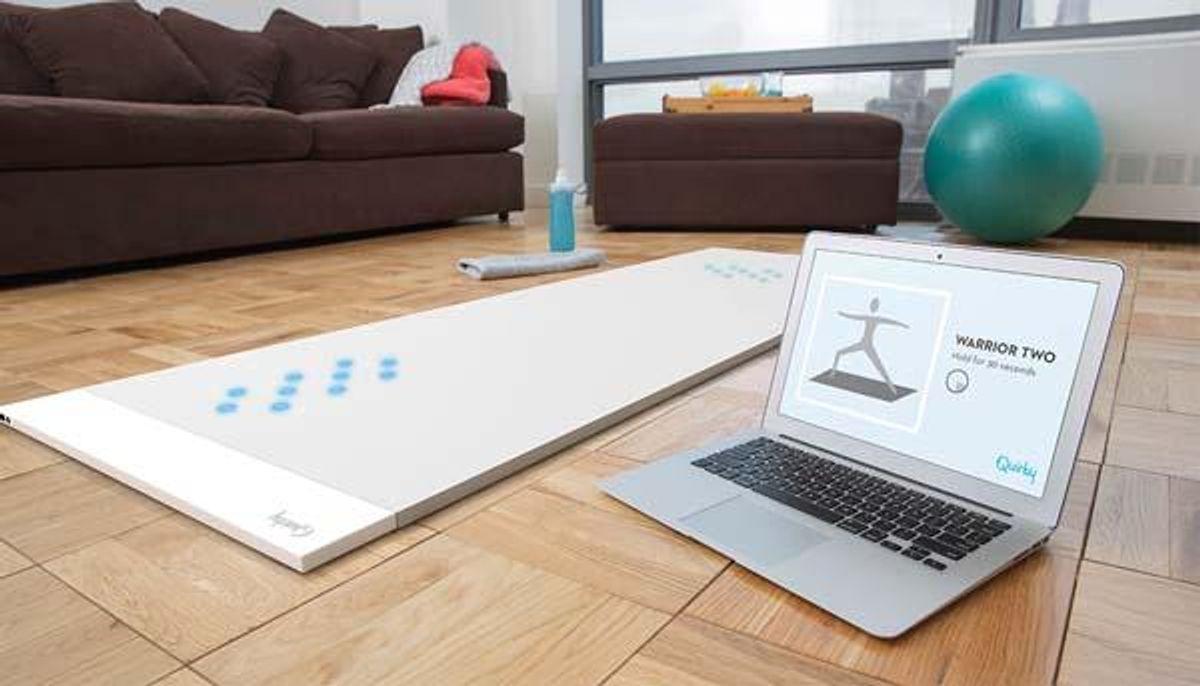5 Simple Steps to Clean Your Yoga Mat and Keep It Germ-Free
Maintaining the cleanliness of your yoga mat is essential not only for your personal hygiene but also to extend the life of your mat. Regular cleaning removes dirt, sweat, and bacteria, ensuring a safe and pleasant practice environment. This article outlines five simple steps that you can follow to keep your yoga mat clean and germ-free, using a combination of household items and specific yoga mat care products.
Key Takeaways
- Utilize a specialized yoga mat cleaner to remove dirt and sweat after each use.
- Employ a microfiber towel to effectively wipe down and absorb moisture from the mat.
- Incorporate essential oils for their natural antibacterial properties and to add a pleasant aroma.
- Use disinfectant wipes for a quick and convenient way to sanitize your mat, especially after intense sessions.
- Always allow your yoga mat to air dry completely to prevent mold and mildew growth.
1. Yoga Mat Cleaner
Keeping your yoga mat clean is crucial for both hygiene and longevity. A simple DIY cleaner can be made using natural ingredients such as tea tree oil and lemon juice, which are known for their antibacterial properties. Mix these ingredients with water in a spray bottle for an effective and eco-friendly cleaning solution.
To use the cleaner, lightly spray your mat and wipe it down with a clean cloth. Ensure that you cover the entire surface to eliminate any germs or bacteria.
After cleaning, always allow your mat to air out completely before rolling it up. This prevents moisture from getting trapped, which can lead to mold and mildew.
By following these steps, you can help ensure that your yoga mat remains a safe and clean space for your practice. Regular cleaning paired with proper storage will keep your mat feeling and smelling fresh.
2. Microfiber Towel
After preparing your cleaning solution, it's time to put it to use with a microfiber towel. Gently wipe down your yoga mat to remove dirt, sweat, and oils. Microfiber towels are excellent for this task because they are soft, highly absorbent, and non-abrasive, ensuring that your mat's material is not damaged during the cleaning process.
When using the towel, make sure to cover the entire surface of the mat, paying extra attention to areas that come into frequent contact with your hands and feet.
For best results, follow these simple steps:
- Dampen the microfiber towel with the cleaning solution.
- Wipe the mat from top to bottom in a circular motion.
- Flip the mat over and repeat on the other side.
- Use a dry area of the towel to remove any excess moisture.
3. Essential Oils
Incorporating essential oils into your yoga mat cleaning routine can add a pleasant aroma and provide natural antibacterial properties. Mix your own spray by combining water with a few drops of oils such as Citrus and Eucalyptus or Lavender and Tea Tree oil. This not only helps to maintain a clean yoga mat but also creates a refreshing scent that can enhance your yoga experience.
To use, simply spritz your mat with the mixture and wipe it down with a clean cloth. Allow the mat to air dry before rolling it up. Here's a simple recipe to get you started:
- 2 cups of water
- 1/2 cup of white vinegar
- 10 drops of essential oil (choose your preferred scent)
By using this natural spray regularly, you can prevent the buildup of bacteria and fungi, ensuring that your mat remains hygienic and safe for your practice.
4. Disinfectant Wipes
Disinfectant wipes are a convenient option for keeping your yoga mat germ-free. Ensure that the wipes are suitable for use on a yoga mat to avoid damaging the material. Wipes that are too harsh can cause the mat to deteriorate over time.
Gently wipe the surface of the mat, allowing the disinfectant to do its work. Do not scrub too hard as it may wear out the texture of the mat. After wiping, allow the mat to air dry completely before rolling it up again.
It's important to use disinfectant wipes that do not leave a residue that could make the mat slippery during use.
For black yoga mats, proper care and maintenance are essential for longevity and hygiene. Use natural cleaning solutions, store properly, and clean regularly to preserve the mat's quality.
5. Air Dry
After cleaning your yoga mat with the suggested solutions, the final and crucial step is to let it air dry. Do not roll up your mat while it's still damp, as this can promote the growth of bacteria and mold. Instead, hang it up or lay it flat in a well-ventilated area away from direct sunlight, which can degrade the material over time.
Air drying is not only the most environmentally friendly option, but it also ensures that your mat retains its shape and texture. Here's a simple guide to ensure proper drying:
- Hang the mat over a shower curtain rod or on a laundry rack.
- If laying flat, flip the mat halfway through drying to ensure both sides dry evenly.
- Avoid hanging the mat outside where it can collect pollen and dust.
Ensure the mat is completely dry before rolling it up to prevent any musty odors or damage to the mat's surface.
Embrace the simplicity of self-care with our eco-friendly yoga essentials. Air drying your yoga gear is not only better for the environment, but it also preserves the quality of your products. Visit Yune Yoga today and explore our range of natural rubber mats, eco mats, and more. Don't forget, we offer free shipping on all orders! Make the sustainable choice and click on 'Shop All' to find your perfect yoga companion.
Conclusion
Maintaining a clean and germ-free yoga mat is essential for your health and the longevity of your mat. By following the five simple steps outlined in this article, you can ensure that your mat remains a safe and hygienic surface for your yoga practice. Regular cleaning, using the right solutions, and allowing your mat to dry completely are key to preventing the buildup of bacteria and odors. Remember, a clean mat not only protects you from germs but also enhances your yoga experience by providing a fresh and pleasant environment for your practice. Embrace these cleaning habits, and your yoga mat will continue to be your trusted companion on your journey to wellness.
Frequently Asked Questions
How often should I clean my yoga mat?
You should clean your yoga mat after every use to remove sweat, oils, and bacteria. For a deeper clean, do this at least once a week.
Can I use any cleaner on my yoga mat?
No, you should use a cleaner that is specifically designed for yoga mats or a gentle, natural solution to avoid damaging the material.
Are essential oils safe to use on yoga mats?
Yes, essential oils can be safe for yoga mats, but they should be used sparingly and diluted with water or a carrier oil to avoid degrading the mat's material.
What's the best way to dry my yoga mat after cleaning?
After cleaning, hang your yoga mat in a well-ventilated area out of direct sunlight to air dry completely before rolling it up again.
Is it okay to use disinfectant wipes on my yoga mat?
Disinfectant wipes can be used for a quick clean, but make sure they're suitable for the material of your mat and do not contain harsh chemicals that might cause damage.
Can I put my yoga mat in the washing machine?
Some yoga mats can be machine washed, but check the manufacturer's instructions first. If machine washing is allowed, use a gentle cycle and mild detergent.


